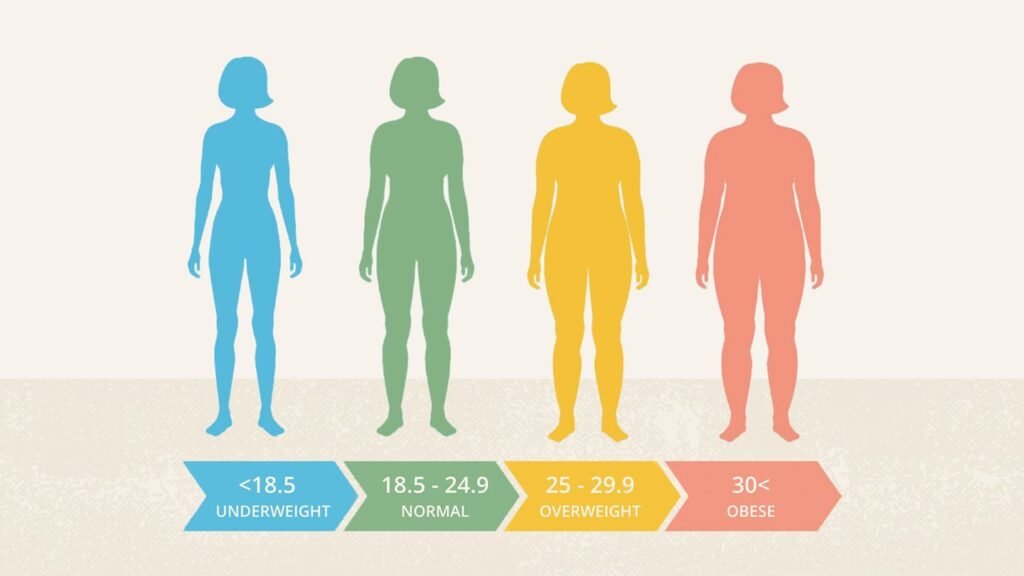What is Body Mass Index (BMI)? How can you maintain a good BMI?
An overview Introduction: Understanding BMI’s Significance In our journey towards optimal health, one of the essential metrics we encounter is Body Mass Index (BMI).
BMI serves as a fundamental tool for assessing weight status and potential health risks associated with weight.
What is BMI and Why Does It Matter? Body Mass Index (BMI) is a measure of body fat based on an individual’s weight and height. It is calculated by dividing weight in kilograms by the square of height in meters (BMI = weight (kg) / height (m)^2).
The resulting number falls into categories indicating weight status, including underweight, normal weight, overweight, and obesity.
BMI matters because it provides a snapshot of our overall weight-related health. Being underweight or overweight can increase the risk of various health conditions such as cardiovascular disease, diabetes, and joint problems. A healthy BMI is associated with lower health risks and better overall quality of life.
Understanding BMI Categories
- Underweight: BMI less than 18.5
- Normal weight: BMI between 18.5 and 24.9
- Overweight: BMI between 25 and 29.9
- Obesity: BMI of 30 or higher

Each BMI category has implications for health, and knowing where you fall on the BMI scale can guide you towards making informed decisions about your health and lifestyle choices. The Impact of Nutrition on BMI Nutrition plays a pivotal role in maintaining a healthy BMI. A balanced diet rich in fruits, vegetables, whole grains, lean proteins, and healthy fats is essential. Here are some key nutritional tips for managing BMI effectively:
- Emphasize Whole Foods: Incorporate a variety of whole foods into your diet, including fruits, vegetables, whole grains, lean proteins, and healthy fats. Whole foods are rich in nutrients, fiber, and antioxidants, promoting satiety and overall health.
- Mindful Eating: Practice mindful eating by paying attention to hunger cues, eating slowly, and savoring each bite. Avoid distractions like screens or multitasking during meals to enhance awareness and prevent overeating.
- Portion Control: Be mindful of portion sizes to avoid consuming more calories than your body needs. Use smaller plates, bowls, and utensils to help control portion sizes and prevent overindulgence.
- Balanced Macronutrients: Ensure a balance of carbohydrates, proteins, and fats in your meals. Opt for complex carbohydrates like whole grains, proteins from lean sources such as poultry, fish, legumes, and incorporate healthy fats like avocados, nuts, and olive oil
- Hydration: Stay adequately hydrated by drinking plenty of water throughout the day. Water supports digestion, metabolism, and overall health. Limit sugary beverages and opt for water as your primary source of hydration.

Physical Activity and BMI: Finding Your Fitness Groove Regular physical activity is another cornerstone of BMI management and overall health. Here are some practical tips for incorporating physical activity into your daily routine:
- Choose Activities You Enjoy: Find physical activities that you enjoy and can sustain long-term. Whether it’s dancing, hiking, swimming, or playing a sport, engaging in activities you love makes exercise more enjoyable and sustainable.
- Set Realistic Goals: Set achievable fitness goals based on your current fitness level and health status. Gradually increase the intensity and duration of your workouts to avoid burnout and injuries.
- Mix It Up: Incorporate a variety of exercises into your routine to target different muscle groups and prevent boredom. Include cardiovascular exercises for heart health, strength training for muscle tone and bone density, and flexibility exercises like yoga or stretching.
4. Prioritize Consistency: Aim for regular physical activity most days of the week. Consistency is key to seeing long-term benefits in terms of weight management, fitness improvements, and overall wellbeing

The Mind-Body Connection:
Yoga for BMI and Beyond Yoga offers a holistic approach to fitness and well-being, combining physical postures (asanas), breathwork (pranayama), and mindfulness practices. Here are some ways yoga can benefit BMI management and overall health:
- Stress Reduction: Yoga techniques like deep breathing, meditation, and relaxation promote stress reduction and mental clarity. Lowering stress levels can prevent emotional eating and support healthy weight management.
- Body Awareness: Yoga enhances body awareness, allowing you to tune into your body’s signals of hunger, fullness, and satiety. This mindfulness can prevent overeating and promote mindful eating habits.
- Improved Flexibility and Strength: Regular practice of yoga poses improves flexibility, mobility, and muscle strength. Stronger muscles contribute to a higher metabolism and better overall fitness.
- Mindful Movement: Yoga encourages mindful movement, focusing on the present moment and connecting breath with movement.

This mindfulness carries over into daily life, promoting a more mindful approach to food choices and lifestyle habits. Dispelling BMI Misconceptions It’s essential to address common misconceptions about BMI to foster a better understanding of its role in health and well-being:
- Myth: BMI is the only measure of health. Fact: While BMI provides insights into weight status, it doesn’t account for individual differences in body composition, muscle mass, or overall fitness level. It’s one of many factors to consider for a comprehensive health assessment.
- Myth: A low BMI always indicates good health. Fact: Being underweight can also pose health risks, including nutrient deficiencies, weakened immune function, and hormonal imbalances. Optimal health is about balance and overall well-being, not just BMI numbers.
- Myth: BMI is accurate for everyone. Fact: BMI may not be as accurate for athletes, older adults, or individuals with specific health conditions. It’s a screening tool that should be interpreted alongside other health markers and assessments.
Practical Steps for BMI Management Achieving and maintaining a healthy BMI involves a multifaceted approach that includes nutrition, physical activity, mindfulness practices, and regular health monitoring. Here are practical steps you can take:
- Educate Yourself: Learn about BMI, its significance, and how it relates to overall health. Understanding the basics empowers you to make informed decisions about your health journey.
- Consult a Healthcare Professional: Seek guidance from a healthcare provider or registered dietitian for personalized advice and support in managing BMI, nutrition, and fitness goals.
- Set Realistic Goals: Establish achievable goals for BMI management, weight loss, or maintenance. Break larger goals into smaller, manageable steps to track progress and stay motivated.
- Create a Supportive Environment: Surround yourself with supportive friends, family, or communities that encourage healthy habits and positive lifestyle changes.
- Celebrate Progress: Celebrate small victories along the way, whether it’s reaching a fitness milestone, making healthier food choices, or improving overall well-being. Acknowledge and celebrate your efforts towards a healthier you.

Conclusion:
Embracing a Balanced Approach By adopting a balanced approach to health that includes nutrition, physical activity, mindfulness practices, and self-care, individuals can achieve optimal BMI management, dispel myths, and empower themselves for better health outcomes.
Remember that health is a lifelong journey, and small, consistent changes can lead to significant improvements over time. Listen to your body, prioritize self-care, and seek support when needed.
Here’s to embracing a balanced approach to health, empowering yourself for better BMI management, and living your best life



